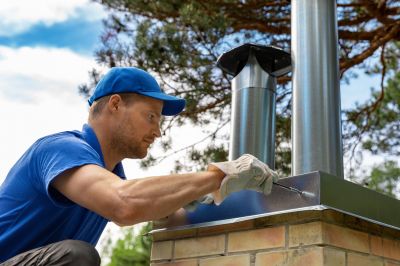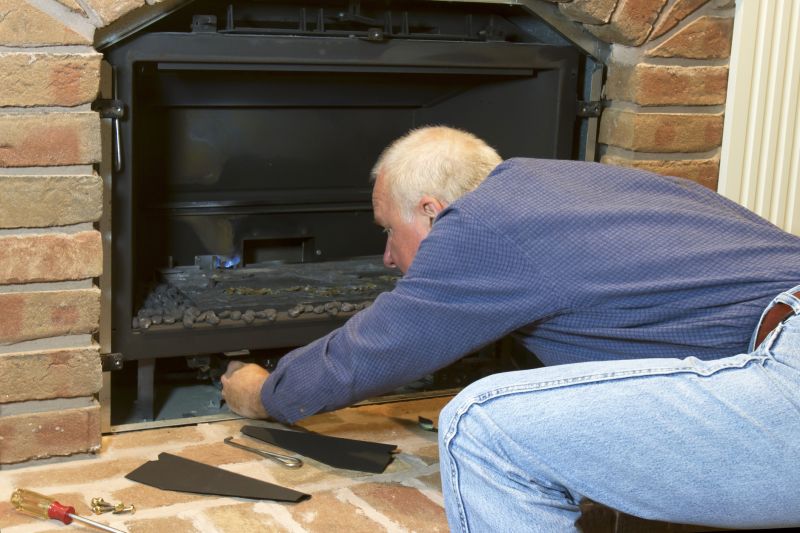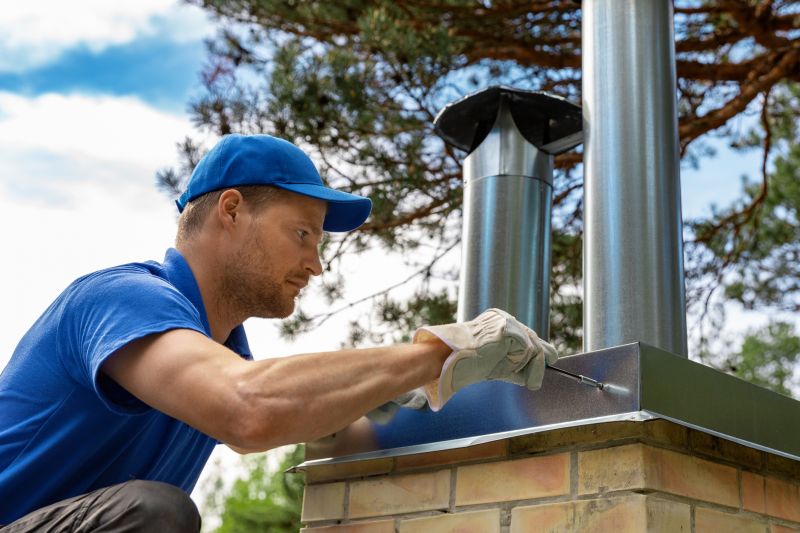Expert Chimney Inspection to Keep Your Fireplace Efficient
Regular chimney inspections are essential for maintaining safety and efficiency in wood-burning fireplaces and chimneys. Ensuring all components function properly helps prevent potential hazards and prolongs the lifespan of the chimney system.

A chimney cap prevents debris, animals, and moisture from entering the chimney, reducing the risk of blockages and water damage.

The liner protects the chimney walls from heat and corrosion, ensuring safe venting of smoke and gases.

The damper controls airflow and prevents heat loss when the fireplace is not in use, improving energy efficiency.

The hearth provides a safe area around the fireplace, preventing fires and containing sparks.

The flue directs smoke and gases out of the building, and its condition is vital for proper ventilation.

The crown seals the top of the chimney, protecting it from water infiltration and structural damage.
Statistics show that a significant number of chimney fires are caused by creosote buildup and blockages resulting from neglected inspections. Regular assessments can identify issues such as cracks, obstructions, or deterioration before they become serious hazards.
Inspecting a chimney ensures the structural integrity of components like the chimney cap, liner, and damper, reducing the risk of fire and smoke damage.
Inspection can reveal creosote buildup, cracked liners, rusted dampers, and water damage, all of which compromise safety and efficiency.
A malfunctioning chimney can lead to smoke inhalation, carbon monoxide leaks, and chimney fires, posing serious health and safety risks.
Key elements such as the chimney cap, liner, damper, and crown must be regularly checked to ensure proper operation and safety.

A clean and well-maintained wood-burning fireplace enhances safety and efficiency.

Visual and technical assessments identify potential hazards and necessary repairs.

Accumulation of creosote can ignite, causing dangerous chimney fires if not regularly removed.

Proper damper function ensures optimal airflow and safety during fireplace use.

A well-maintained crown and cap prevent water infiltration that can weaken chimney structure.

Specialized tools are used during inspections to detect cracks, blockages, and deterioration.
Regular chimney inspections are a proactive approach to ensuring the safety and efficiency of wood-burning fireplaces. Addressing issues early can prevent costly repairs and reduce the risk of dangerous fires or harmful emissions.
To receive a detailed quote for chimney inspection services, please use the contact form provided. Proper inspection and maintenance help keep the fireplace safe and functioning optimally, providing peace of mind during use.



